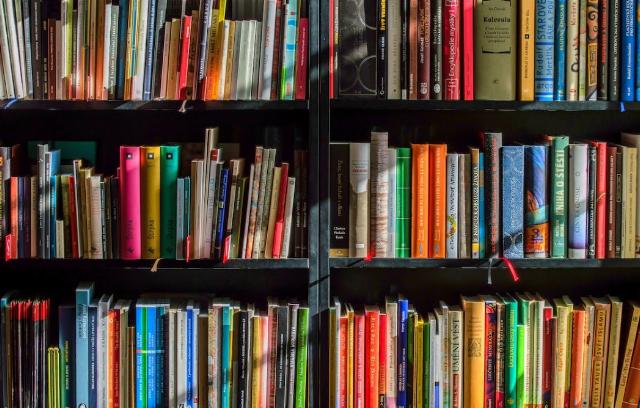The pope wants people to read literature
As summer stares back increasingly from the rear-view mirror, I’m reminded of growing up in Perth Amboy, New Jersey, in the 1960s and 1970s. School-free summers were a great time to go places. Among those places was our public library. It wasn’t the only or primary place, but it was among those places.
It was among them because Mom insisted I do something with my head besides sunburn it. It was systematic, because kids could borrow books only for two weeks. It was a relief because, unlike home, they had air-conditioning.
And, oh, yeah, they had books.
Those memories return in light of Pope Francis’s recent letter, in which he promotes the reading of literature. Most press coverage spins the story as “Pope tells seminarians: Read literature!,” but that’s not the whole story. True, the pontiff admits he started out writing to seminarians (who still bear the bulk of his focus), but he broadens his attention, writing that reading literature broadens everybody. It creates empathy, it helps one stand in another’s shoes, and it teaches attention and listening.
He also admits that it helps get people off clicking screens. That sounds a bit like my mom telling me to walk to the library so I wouldn’t watch so much of the “boob tube” (’60s for “television”).
I don’t disagree with what the pope wrote. In fact, I heartily agree with it as far as it goes. The question is, what lies deeper?
The pope says he taught literature, sticking books in students’ hands, during his Jesuit formation back in the school year 1964–65. I point out that that was sixty years ago, and schools have changed.
The advent of computers was hailed as a revolutionary change in instruction. Teaching could now be tailored to student interests and modulated to student pace. The slower kid could have supplemental remediation; the faster kid could blaze through new levels. Information would be at one’s fingertips.
As with politicians, there’s always a difference between promise and delivery.
My kids have largely gone through grade and high schools in the post-I.T. revolutionary age. How many times, discussing a question, I asked to see their “textbook,” only to be told there is no such thing.
The pope wants to ameliorate screen addiction. But I’d suggest that books versus screens are not just two different modes of information delivery. They are qualitatively different, and they form qualitatively different — in some ways mutually exclusive — intellectual habits.
Books, like open-stack libraries, tantalize with open-ended possibilities. Screens generally fix on the datum of information the user seeks. Card catalogues and book indices are not the same thing as search engines. Search engines will exactly pinpoint every use of the word “zymurgy” in a given text. Indices will point you in general directions that may actually even broaden your query.
And those search engines, being programmed, are also not entirely objective fact-finders. Algorithmic planning highlights some things, deaccentuates others. Relying on them is relying on somebody else’s assessment of what is important.
Online “reading” tends to focus on discrete pieces of data. My “zymurgy” search does not delve into broader chemistry issues. In other words, this modality tends to focus on factoids, not “the bigger picture.” That’s the difference between a trivia master and an educated man.
So, in urging a recovery of reading, the pope omits a key element: we may very well have to teach a screens-based generation how to read that strange and exotic paper thing called a “book.”
But it’s not just a question of teaching a method, a “how-to” of reading that paper novelty. Let’s not forget how many people are simply not reading at grade level.
Pick up Nathaniel Hawthorne’s Scarlet Letter. Just read its opening paragraph. If you stick it in a blogpost editor, it will be scored as 46.2 — “difficult to read” and college-level.
The Scarlet Letter is a canonical piece of American literature. I plowed through it one summer between eighth and ninth grade. It wasn’t easy, but I got its main lines. Please tell me what young person would voluntarily read The Scarlet Letter today, especially given its daunting vocabulary.
The popular story “The Legend of Sleepy Hollow” was once a staple in American schools. Its opening paragraph scores 56.8, “fairly difficult to read.” I will not even dare plug in an excerpt from James Fenimore Cooper.
Hawthorne, Irving, and Cooper were not bloggers. They didn’t write in the equivalent of “See Dick run! Run! Run! Run! Now he’s eating his sandwich. Here’s a picture!” And if you’ve been fed a diet of the latter, isn’t the former going to sit like overdone Sauerbraten?
The modern solution is to resort to “dumbed down” versions — abridged texts summarized in unchallenging vocabulary. Or just resort to “modern” literature, like “Heather Has Two Mommies” or “All Boys Aren’t Blue.”
The pope is on to something, though his solution is not as simple as it first seems. Recovering the art of reading and our national literary heritage (not to mention global treasures, like Crime and Punishment, also something from my P.A. Public Library days) will take effort. But it will be effort well spent.

Image via Pexels.





